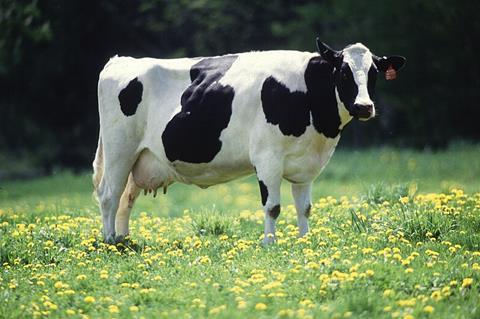A Kansas State University researcher has published findings linking milking practices to the transmission of bovine H5N1 influenza virus, which affects dairy cattle and was first detected in the U.S. in spring 2024.

Juergen Richt is the senior author of the paper “H5N1 clade 2.3.4.4b dynamics in experimentally infected calves and cows,” which was published Sept. 25 in the journal Nature. Richt is a regents distinguished professor, university distinguished professor in diagnostic medicine and pathobiology, and director of the College of Veterinary Medicine’s Center of Excellence for Emerging and Zoonotic Animal Diseases.
READ MORE: How researchers confirmed first case of avian influenza transmitted from cow to human
READ MORE: High H5N1 influenza levels found in mice given raw milk from infected dairy cows
Highly pathogenic H5N1 avian influenza has affected more than 200 dairy cattle farms in 14 states. Milking equipment and anthropogenic activities were suspected to be involved in transmission, but clear evidence of the mode of transmission has been lacking.
Influenza transmitted via milk and milking procedures
In a collaborative effort, research teams led by Richt and Martin Beer from the Friedrich Loeffler Institute in Germany experimentally infected both calves and lactating cows with H5N1 clade 2.3.4.4b virus, the strain of the virus circulating in cattle in the U.S., to gain insight into likely modes of transmission.
They compared susceptibility and transmission in nine calves infected by oral and nasal inoculation and three lactating cows via inoculation of the mammary gland. In addition, the mammary glands of three other dairy cows were inoculated with H5N1 euDG, the avian influenza clade 2.3.4.4b strain that is circulating in Europe.
Infection of the calves resulted in mild clinical disease, with moderate viral replication and no transmission to co-housed calves. In contrast, the dairy cows developed severe mammary gland infection, characterized by fever, mastitis and abrupt reduction in milk yield. Drastic increases in the levels of virus in the milk were observed, but there was no evidence of systemic infection or nasal shedding of the virus. These findings indicate that the milk and milking procedures, rather than respiratory spread, are the likely primary routes of H5N1 transmission between cattle.
Great concern to dairy industry
“There are nearly 10 million dairy cows in the United States today. It is imperative that we study the ways this new disease transmits in dairy cows,” Richt said. “Given the potential economic damage to the cattle industry and risk to human health presented by bovine H5N1, this research shows that establishing safe, sanitary milking procedures is a topic of substantial concern within the U.S. dairy industry.”
“Dr. Richt’s ability to orchestrate an international collaboration to provide answers regarding viral transmission within months of new disease recognition is extraordinary,” said Bonnie Rush, Hodes family dean of the veterinary college. “Similar to COVID-19, this Nature publication is a shining example of the expertise of this research team to rapidly pivot resources and deliver relevant data in response to an emerging zoonotic disease.”







No comments yet